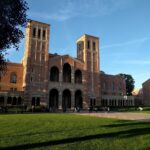Columbia’s Inner Circle
Accuracy in Academia’s sister organization, Accuracy in Media, has covered one-quarter of the faculty at the Columbia University School of Journalism and found them wanting. Indeed, it is interesting to compare Columbia’s descriptions of some of these with AIM’s findings:
- In 2005, AIM editor Cliff Kincaid noted that “Victor Navasky, publisher of The Nation and now chairman of the Columbia Journalism Review, wrote an article for the Los Angeles Times under the headline, ‘Objectivity is Highly Overrated.’ He argued for more “opinion journalism” from the media.”
- Todd Gitlin, formerly of the Students for a Democratic Society (SDS), also hangs his hat at Columbia’s Journalism School, although it should be noted that he has distanced himself from the more violent spinoff of the SDS—the Weather Underground.
- Richard Wald, the Fred W. Friendly professor of professional practice in Media and Society, as an ABC news producer in the 1990s, gave the green light to the network’s hit job on the non-union Food Lion supermarket chain in which undercover union operatives manufactured evidence of unsanitary practices by the company that the network broadcast as actual.
- Betsy West, an associate professor of professional practice, was one of the CBS producers fired for giving the go-ahead to the manufactured story of President Bush’s combat avoidance that brought down legendary anchorman Dan Rather.
John Dinges, the Godfrey Lowell Cabot Professor of Journalism is in charge of the school’s radio curriculum, “which he revamped to emphasize public radio journalism,” according to the Columbia web site. “Dinges began his career as a reporter and copy editor for The Des Moines Register & Tribune,” Columbia tells us. “He was a freelance correspondent in Latin America for many years, during the period of military governments and civil wars in South and Central America, writing for Time, The Washington Post, ABC Radio, The Miami Herald and other news organizations. On his return to the United States, he worked as assistant editor on the foreign desk at The Washington Post.” “Dinges has long been connected with the far left Institute for Policy Studies,” AIM founder Reed Irvine wrote in 1982. “He works on the foreign desk at The Washington Post under Karen DeYoung, who has taught classes at the IPS, and who told one of those classes that most journalists today consider the guerrillas to be the good guys. Dinges frequently writes articles for the Pacific News Service.”
Similarly, Columbia tells us that Thomas B. Edsall, the Joseph Pulitzer II and Edith Pulitzer Moore Professor of Journalism, “ joined the full-time faculty here after a twenty-five year career at The Washington Post. During that time, he covered all aspects of national politics, including presidential elections, the House and Senate, lobbying, tax policy, demographic trends, social welfare, the politics of race and ethnicity, organized labor, among other topics. He is now a correspondent for The New Republic and the National Journal, and has reported for The Baltimore Sun, The Providence Journal, and contributes TV and radio commentary regularly for CNN, CSPAN, MSNBC, PBS, FOX, and NPR.” In 2006, AIM editor Cliff Kincaid noted that “Edsall, who was the senior political reporter for the Post for many years, was a recent guest on the Hugh Hewitt radio show, where he acknowledged that the ratio of Democrats to Republicans in the national press was probably in the range of 15 or 25 to 1.” “There is a real difficulty on the part of the mainstream media being sympathetic, or empathetic, whatever the word would be, to the kind of thinking that goes into conservative approaches to issues,” Edsall told Hewitt.
- “Conservatives love to complain about journalism,” Nicholas Lemann, the Henry Luce professor at Columbia’s Journalism School wrote in the New Yorker in 2006. “They have been devising their own version of what journalism ought to look like: faster, more opinionated, more multimedia, and less hung up on distancing itself from the practice of politics than the daily-newspaper and network news versions.” “This is where the left gets it wrong,” AIM editor Roger Aronoff noted at the time. “It is Lemann’s view that the daily newspapers and network news play it straight, and those conservatives are the ones who are biased. But the public largely sees through that.”
- Actually, associate professor Howard French, AIM reported in 1993, did a fairly balanced job of covering Nicaragua after the Marxist Sandinista government took over. At least he took account of more than one side. Reed Irvine noted in 1993 that in a piece in the Post entitled, “In Nicaragua, No Peace, and Nostalgia for Somoza,” Howard French quoted a rural shopkeeper whose store featured a portrait of longtime dictator Anastasio Somoza Debayle.”He was the last good president we had,” she told French. “Say what you want about him, but in his time there was work. To us, he was a winner.” Nevertheless, even Columbia admits that French is affiliated with George Soros’s Open Society.
Malcolm A. Kline is the Executive Director of Accuracy in Academia.
If you would like to comment on this article, e-mail contact@academia.org




